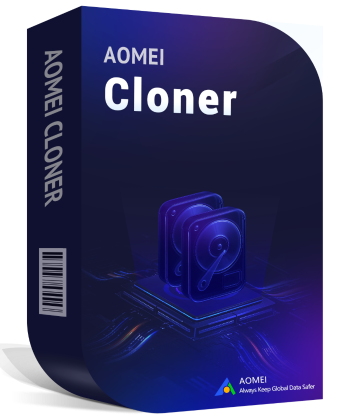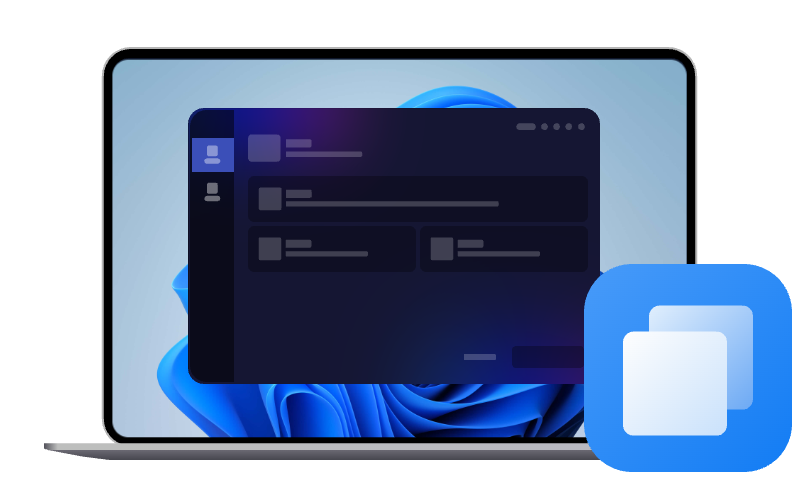How to Use Xcopy Clone Drive | Bootable or Not
This article describes what Xcopy is and how to use Xcopy clone drive, with step-by-step instructions. Also, an easy alternative for bootable clone is included.
What Is an Xcopy?
Xcopy (short for "eXtended Copy") is a powerful command-line utility built into Windows operating systems since the MS-DOS era. It's an enhanced version of the basic Copy command, designed for bulk file/folder and directory processing, with greater flexibility and efficiency. Key features include:
- Selective copying: Options to copy only new/changed files (/D), hidden/system files (/H), or subdirectories (/S, /E).
- Drive cloning: Use commands like Xcopy C:\ D:\ /E /H /C /I /Y to duplicate an entire source drive (C:) to a destination (D:).
- Robust error handling: Skips errors (/C) and verifies integrity, perfect for large-scale data migration without a GUI.
Unlike modern tools, Xcopy is lightweight, runs from Command Prompt, and doesn't require installation - great for scripting or quick disk duplication, though it lacks boot sectors (pair with tools like bootsect for full clones).
How to Clone Drive using Xcopy [for Files or Folders]
Xcopy clone drive is actually to transfer files and folders from one drive to another using the Windows built-in tool. It copies data perfectly but doesn't make bootable drives - use for backups, not full systems.
📢 Quick Tips:
- Use Safe Mode for locked files.
- Add /D for only new files.
- If problems, try Robocopy instead.
Step 1. Search "cmd" in the Start menu, right-click Command Prompt, and choose Run as administrator.
Step 2. Be sure the drive letter of the source and destination drives. Then, type the Xcopy command below and press Enter. Replace C:\ and D:\ with yours.
Xcopy C:\ D:\ /E /H /C /I /Y
⚠️Notes:
◾ /E: All folders, even empty.
◾ /H: Hidden/system files.
◾ /C: Ignores errors.
◾ /I: Create missing directories at the target location.
◾ /Y: No confirm prompts.
Step 3. Type dir C:\ /S and dir D:\ /S in order. This scans and lists everything on both drives, including subfolders. Then, look at the output for matching file counts, sizes, and dates.
This "Xcopyclone drive" method is fast and free- ideal for basic data migration. But if you want to bootable clone a drive with Windows, it’s time to use a powerful cloning tool.
Easy Alternative to Bootable Clone a Drive with Windows
AOMEI Cloner is a powerful disk cloning software, serving as the best alternative to Xcopy if you want to clone drive, not just all data, but also the operating system, system settings, etc. Plus, it offers users some useful cloning features:

- Clone any types of disks, e.g., HDDs/SSDs, MBR/GPT disks, SATA/M.2/PCIe/NVMe, etc.
- Full Migration: Include all data, OS-related partitions, and make cloned drive bootable.
- Intelligent Clone (best for smaller SSD): Clone only used sectors while skipping bad sectors, for faster cloning.
- Auto-Resize: Automatically resize new, larger drive to full capacity. Also, convert disk types between MBR and GPT.
- SSD Alignment: Optimize SSD to top-tier performance and longevity.
- OS Compatibility: Support Windows 7, 8, 10, 11, and Windows Server.
Step 1. Physically install the new hard drive or connect it using a proper adapter. Open AOMEI Cloner after installing, and click Clone > Disk Clone.
Step 2. Select the current system drive and new drive, respectively. Don’t mix them, as the target drive will be deleted during cloning.
Step 3 (IMPORTANT). It will auto-resize the new, larger drive to full capacity. You can click Edit Partitions to confirm this and, optionally, convert MBR to GPT, or GPT to MBR. Also, it’s suggested to enable SSD Alignment for best performance. Confirm and click Start Clone.
⚠️Notes:
❌Sector by Sector Clone is a cloning mode that can clone all sectors of a drive and takes longer. Just leave it unchecked unless it’s for data recovery!
✅ Be sure to perform a boot test before saving the drive, as this determines whether you can boot from this disk afterward.
Conclusion
The “Xcopy clone drive” means cloning all files and folders from one hard drive to another, not support a bootable clone. It requires a “real” hard drive cloning software like AOMEI Cloner that can include OS and boot-related partitions and ensure the cloned drive is bootable. Not to mention it also includes many useful cloning features, simplifying the entire process. Please choose what you want.
FAQs
1. Can XcopyCreate a Bootable Clone of My Windows Drive?
No, Xcopy only duplicates files and folders- it skips boot sectors, MBR/GPT partitions, and system files needed for booting. For bootable "Xcopyclone drive" results, combine with bootsect /nt60 D: (to restore boot code) or use full cloning tools like AOMEI Cloner.
2. What's the Difference Between Xcopy and Robocopy for Drive Cloning?
Robocopy (Robust Copy) is Xcopy's modern successor with better mirroring (/MIR deletes extras on destination), restartable copies, and multi-threading for speed. Use robocopy C:\ D:\ /MIR /COPYALL /R:3 /W:5 for robust "Xcopyclone drive" tasks. Robocopy handles large-scale or error-prone clones better.
3. How to Fix"Access Denied" Errors During XcopyCloning?
Run Command Prompt as Administrator, disable antivirus temporarily, or boot into Safe Mode to unlock files. Add /C /H /R switches to skip/overwrite issues. For persistent errors, check NTFS permissions with icacls.
4. Does Xcopy Preserve File Permissions and Timestamps in a Clone?
Yes, with /K (attributes) and /O (ownership/ACLs), Xcopy keeps read-only flags, timestamps, and permissions. Full command: XcopyC:\ D:\ /E /H /C /K /O /X /Y. /X copies audit info too.
5. How Long Does an XcopyClone Drive Take, and Can I Speed It Up?
The time depends on data size/speed (e.g., 1TB HDD: hours; SSD: minutes). Speed up by excluding junk (/EXCLUDE:filelist.txt), using /J for unbuffered I/O on large files, or Robocopy's /MT:32 (multi-thread).

